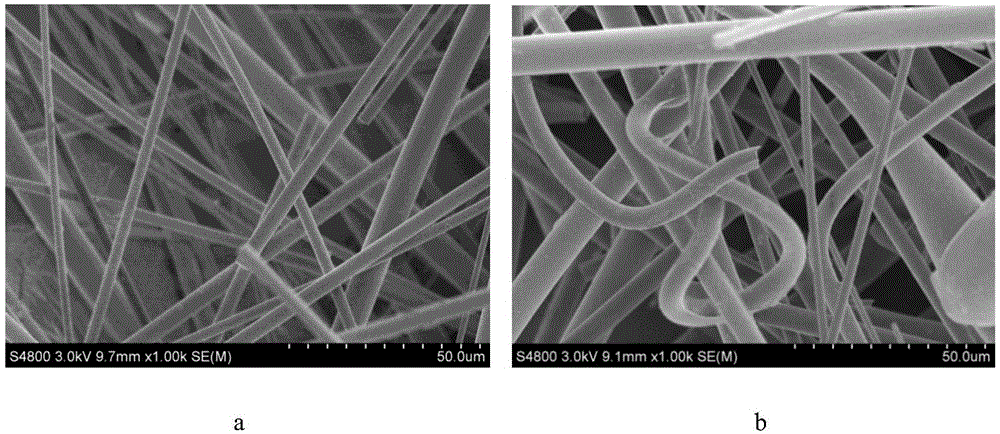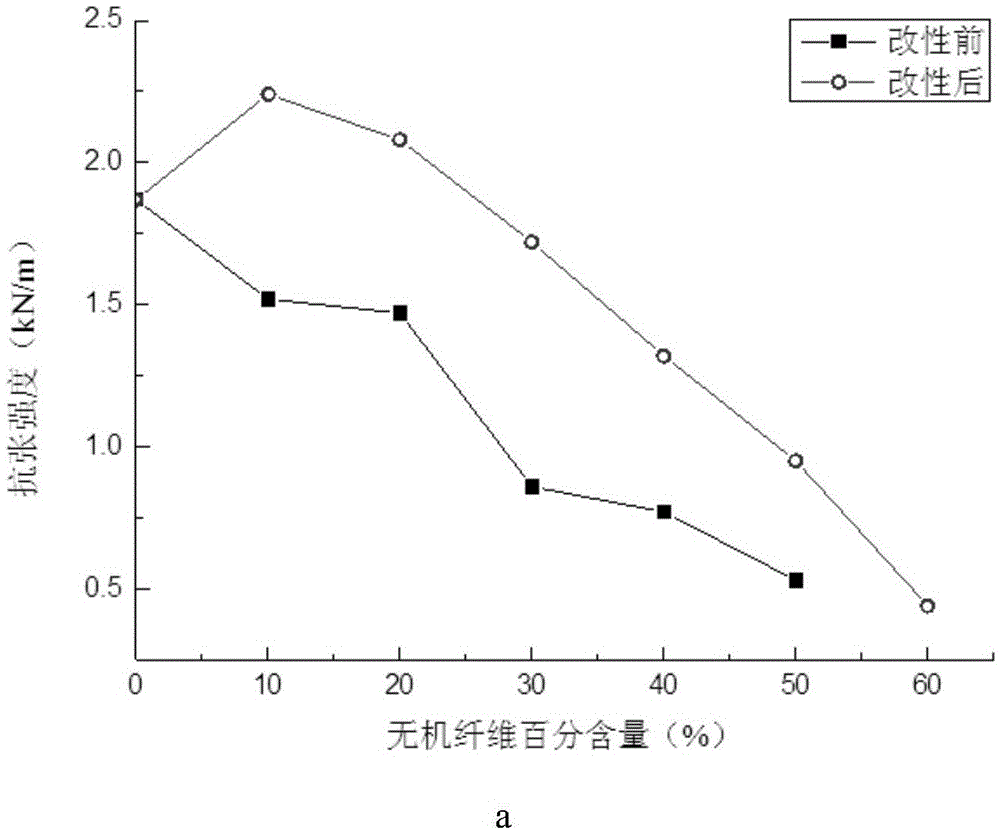Preparation method for inorganic fiber softening agent, and modification method for improving softness of inorganic fiber by using inorganic fiber softening agent
A technology of inorganic fiber and softener, which is applied in the field of materials, can solve the problems of poor comfort, poor dispersion of inorganic fibers, and inability to make fine fibers of inorganic fibers, so as to achieve softness and performance improvement, strong fiber evacuation ability, and low production cost. cheap effect
- Summary
- Abstract
- Description
- Claims
- Application Information
AI Technical Summary
Problems solved by technology
Method used
Image
Examples
Embodiment 1
[0026] Preparation of inorganic fiber softener:
[0027] 1) adding dodecylamine into deionized water at a mass ratio of 1:15, stirring at 50° C. to fully dissolve dodecylamine to obtain a dodecylamine solution;
[0028] 2) Heat the dodecylamine solution at a constant temperature to 55°C, add sodium chloroacetate to it, react at 55°C for 32 minutes, then add sodium hydroxide to the resulting mixture, and continue to react at 55°C for 32 minutes. After the reaction is completed, adjust The pH value of the reaction product is neutral, and the semi-finished product of inorganic fiber softener is obtained; the mass ratio of the sodium chloroacetate added and the dodecylamine in the dodecylamine solution is 1:0.4, and the sodium hydroxide added and the dodecylamine solution The mass ratio of dodecylamine in is 1:4.2;
[0029] 3) After the semi-finished inorganic fiber softener is naturally cooled to below 40°C, add methyl emulsified silicone oil to the semi-finished inorganic fiber...
Embodiment 2
[0033] Preparation of inorganic fiber softener:
[0034] 1) adding dodecylamine into deionized water at a mass ratio of 1:20, stirring at 52°C to fully dissolve dodecylamine to obtain a dodecylamine solution;
[0035] 2) Heat the dodecylamine solution at a constant temperature to 60°C, add sodium chloroacetate to it, react at 60°C for 30 minutes, then add sodium hydroxide to the resulting mixture, and continue to react at 60°C for 30 minutes. After the reaction is completed, adjust The pH value of the reaction product is neutral, and the semi-finished product of inorganic fiber softener is obtained; the mass ratio of the sodium chloroacetate added and the dodecylamine in the dodecylamine solution is 1:0.8, and the sodium hydroxide added and the dodecylamine solution The mass ratio of dodecylamine in is 1:5;
[0036] 3) After the semi-finished inorganic fiber softener is naturally cooled to below 40°C, add methyl emulsified silicone oil to the semi-finished inorganic fiber sof...
Embodiment 3
[0040] Preparation of inorganic fiber softener:
[0041] 1) adding dodecylamine into deionized water at a mass ratio of 1:25, stirring at 48°C to fully dissolve dodecylamine to obtain a dodecylamine solution;
[0042] 2) Heat the dodecylamine solution at a constant temperature to 65°C, add sodium chloroacetate to it, react at 65°C for 28 minutes, then add sodium hydroxide to the resulting mixture, and continue the reaction at 65°C for 28 minutes. After the reaction is completed, adjust The pH value of the reaction product is neutral, and the semi-finished product of inorganic fiber softener is obtained; the mass ratio of the sodium chloroacetate added and the dodecylamine in the dodecylamine solution is 1:1.4, and the sodium hydroxide added and the dodecylamine solution The mass ratio of dodecylamine in is 1:6;
[0043] 3) After the semi-finished inorganic fiber softener is naturally cooled to below 40°C, add methyl emulsified silicone oil to the semi-finished inorganic fiber...
PUM
 Login to View More
Login to View More Abstract
Description
Claims
Application Information
 Login to View More
Login to View More - R&D Engineer
- R&D Manager
- IP Professional
- Industry Leading Data Capabilities
- Powerful AI technology
- Patent DNA Extraction
Browse by: Latest US Patents, China's latest patents, Technical Efficacy Thesaurus, Application Domain, Technology Topic, Popular Technical Reports.
© 2024 PatSnap. All rights reserved.Legal|Privacy policy|Modern Slavery Act Transparency Statement|Sitemap|About US| Contact US: help@patsnap.com










